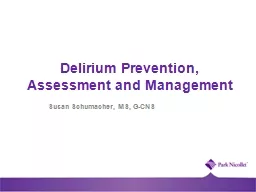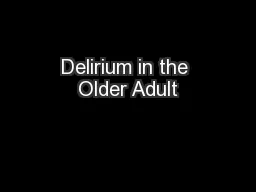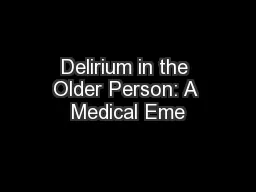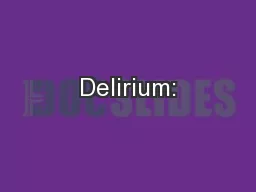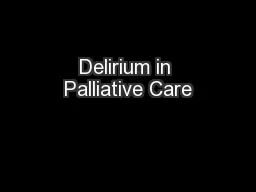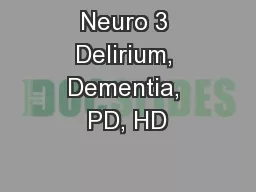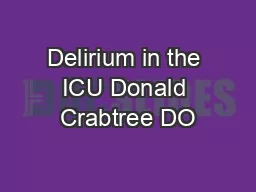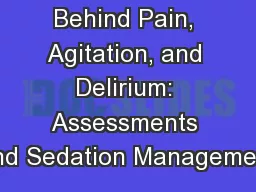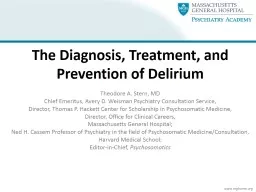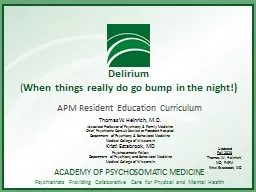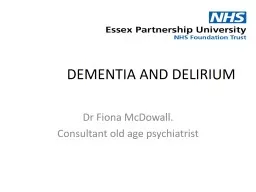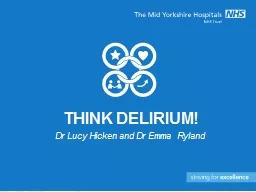PPT-Delirium Prevention, Assessment and Management
Author : giovanna-bartolotta | Published Date : 2020-04-08
Susan Schumacher MS GCNS Objectives Identify 3 differences in clinical presentation of delirium versus underlying dementia Explain how to perform the Confusion
Presentation Embed Code
Download Presentation
Download Presentation The PPT/PDF document " Delirium Prevention, Assessment and Man..." is the property of its rightful owner. Permission is granted to download and print the materials on this website for personal, non-commercial use only, and to display it on your personal computer provided you do not modify the materials and that you retain all copyright notices contained in the materials. By downloading content from our website, you accept the terms of this agreement.
Delirium Prevention, Assessment and Management: Transcript
Download Rules Of Document
" Delirium Prevention, Assessment and Management"The content belongs to its owner. You may download and print it for personal use, without modification, and keep all copyright notices. By downloading, you agree to these terms.
Related Documents

